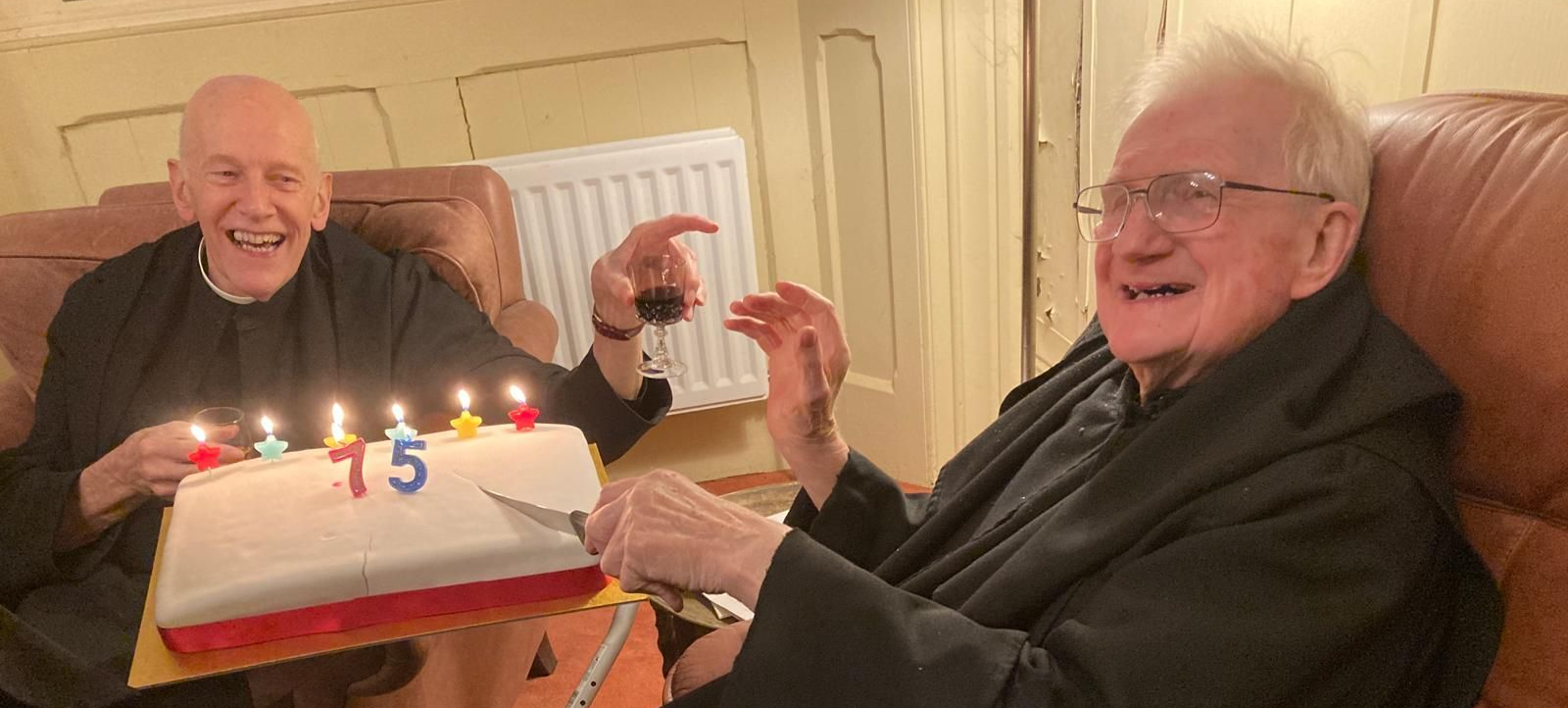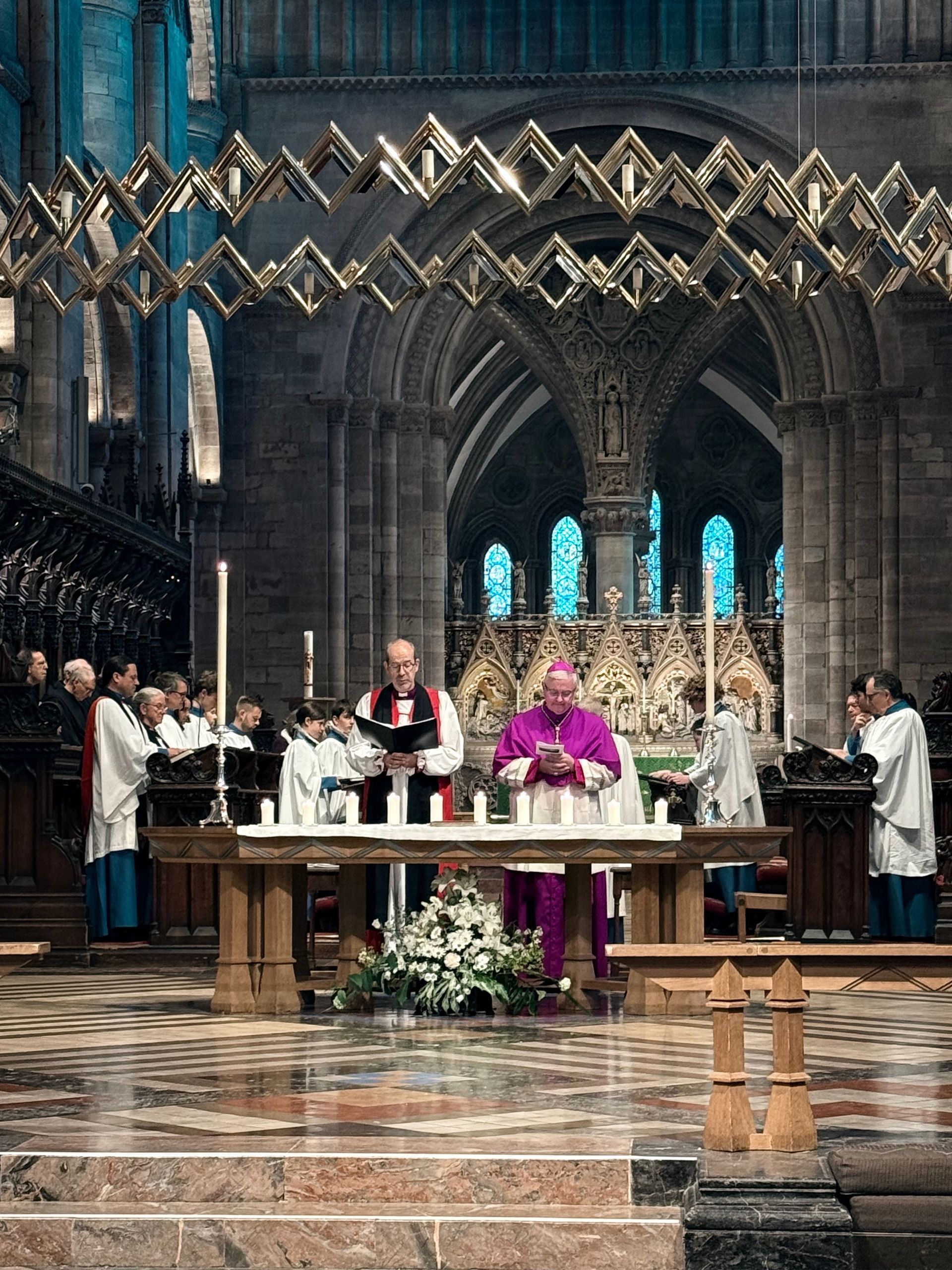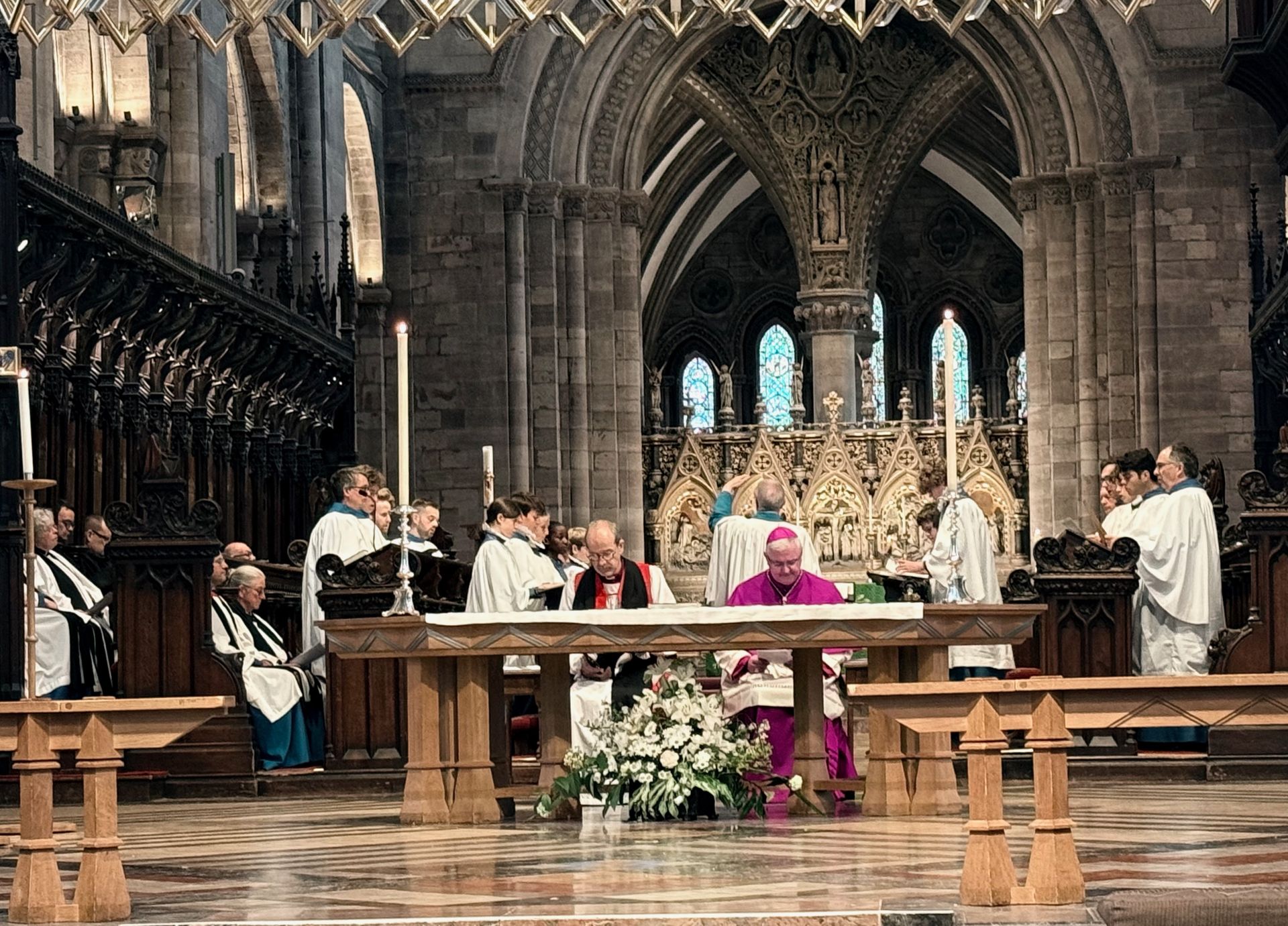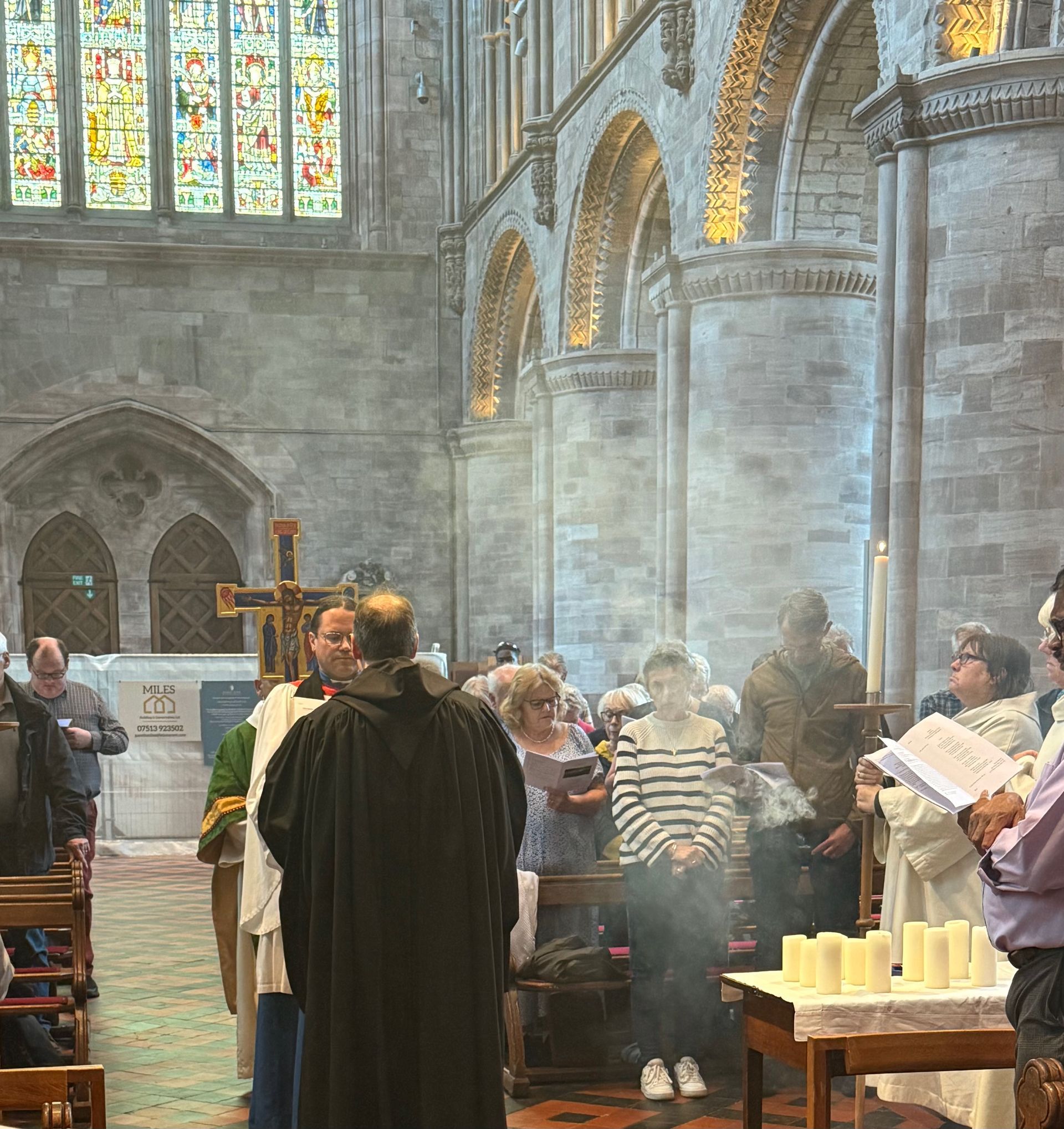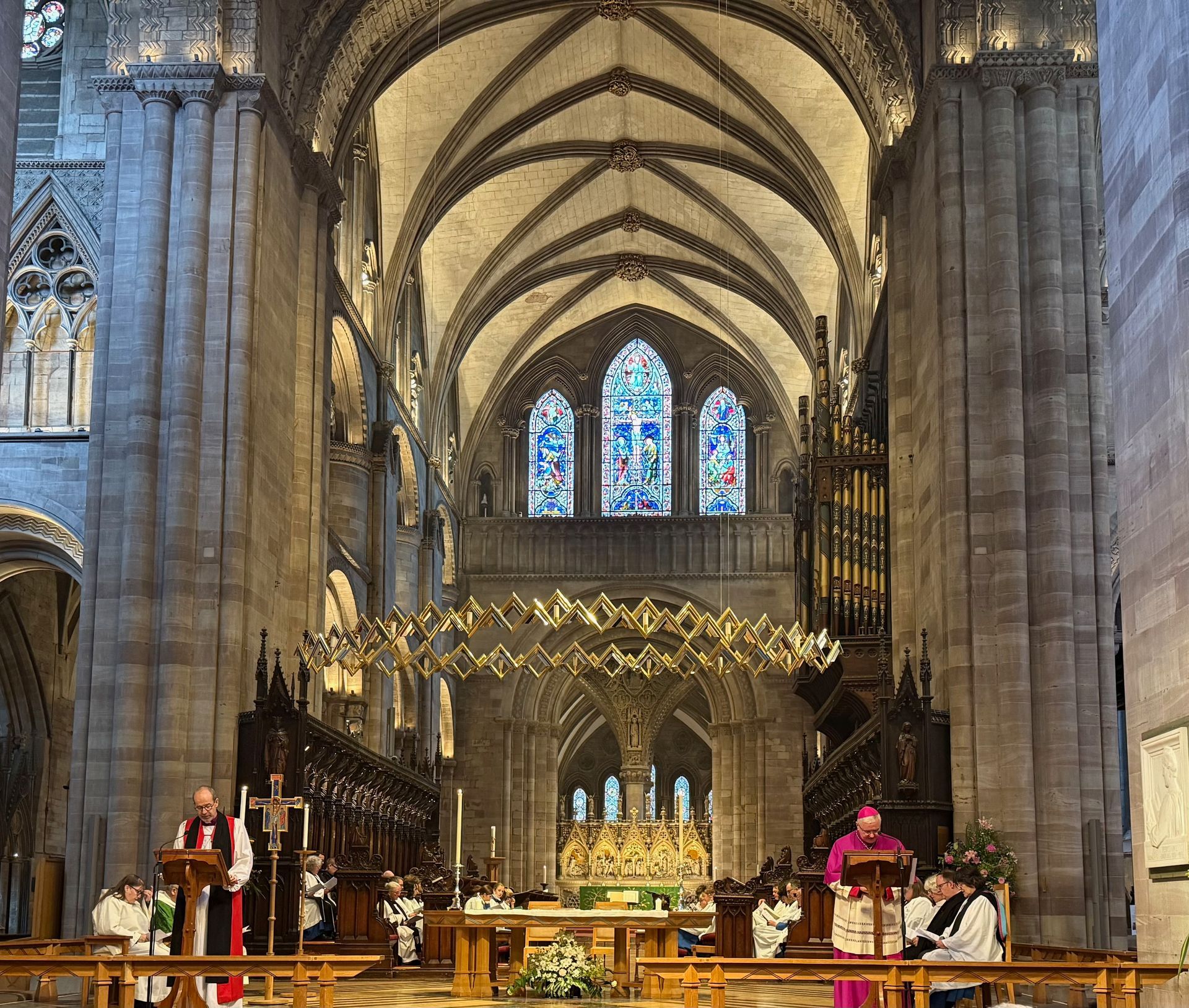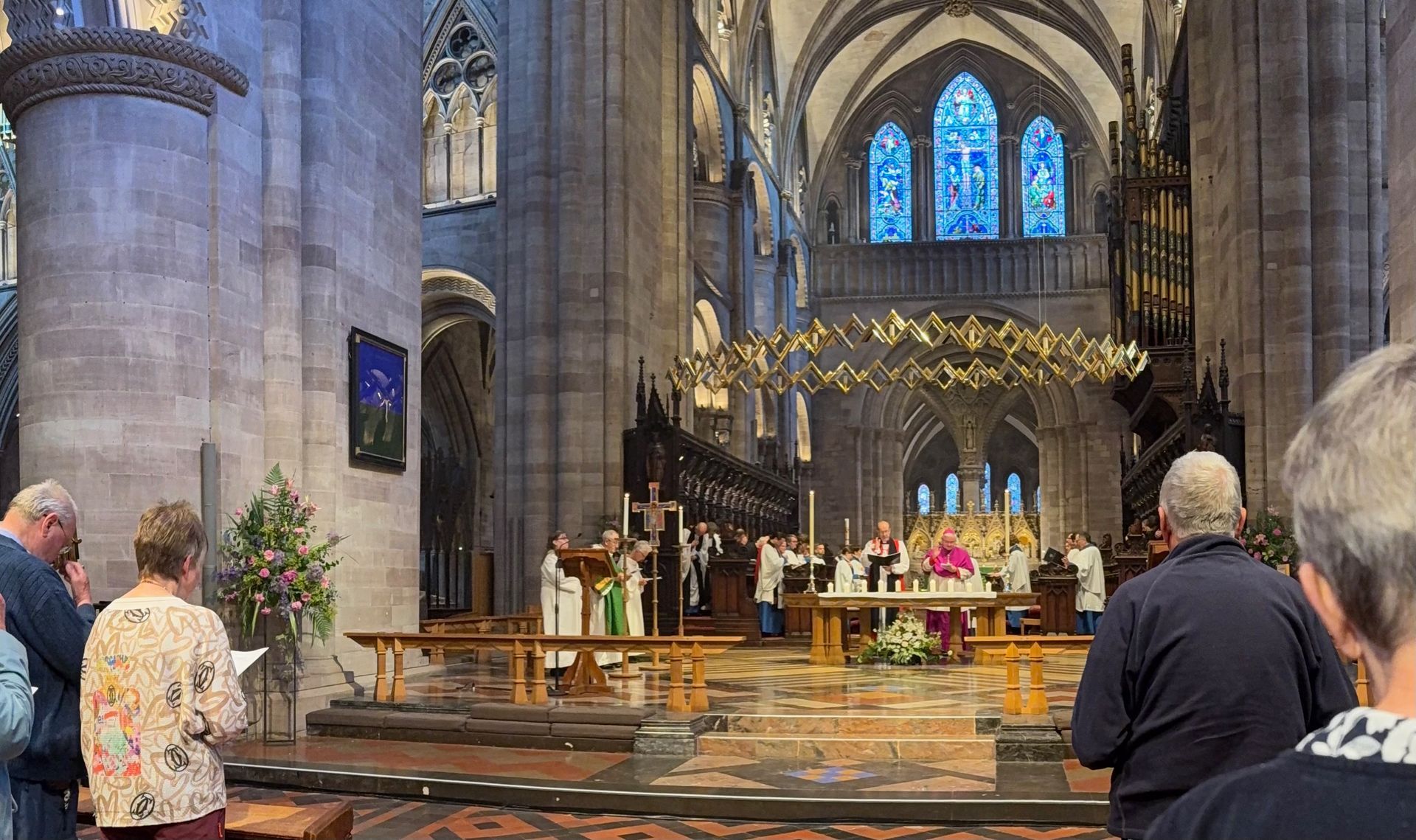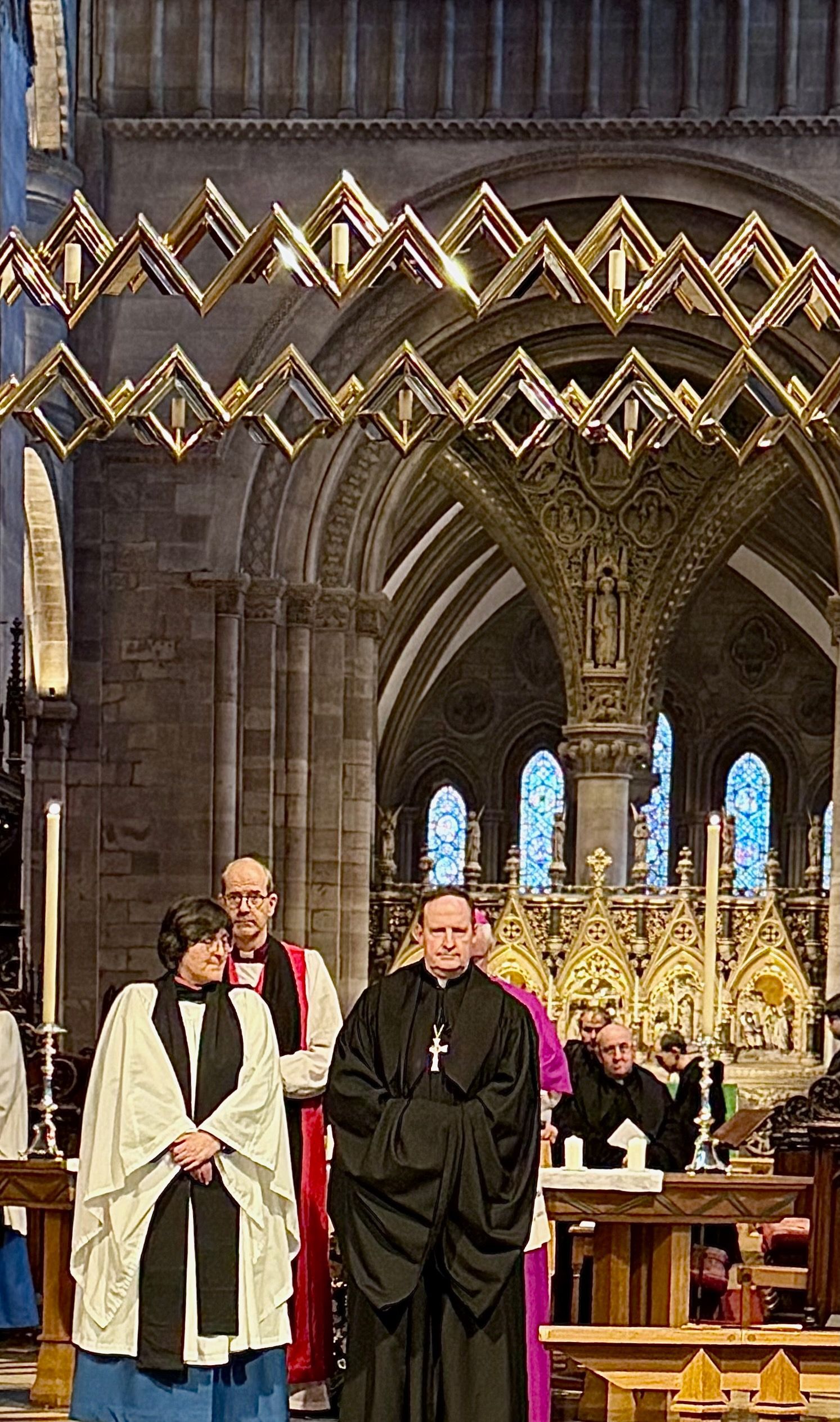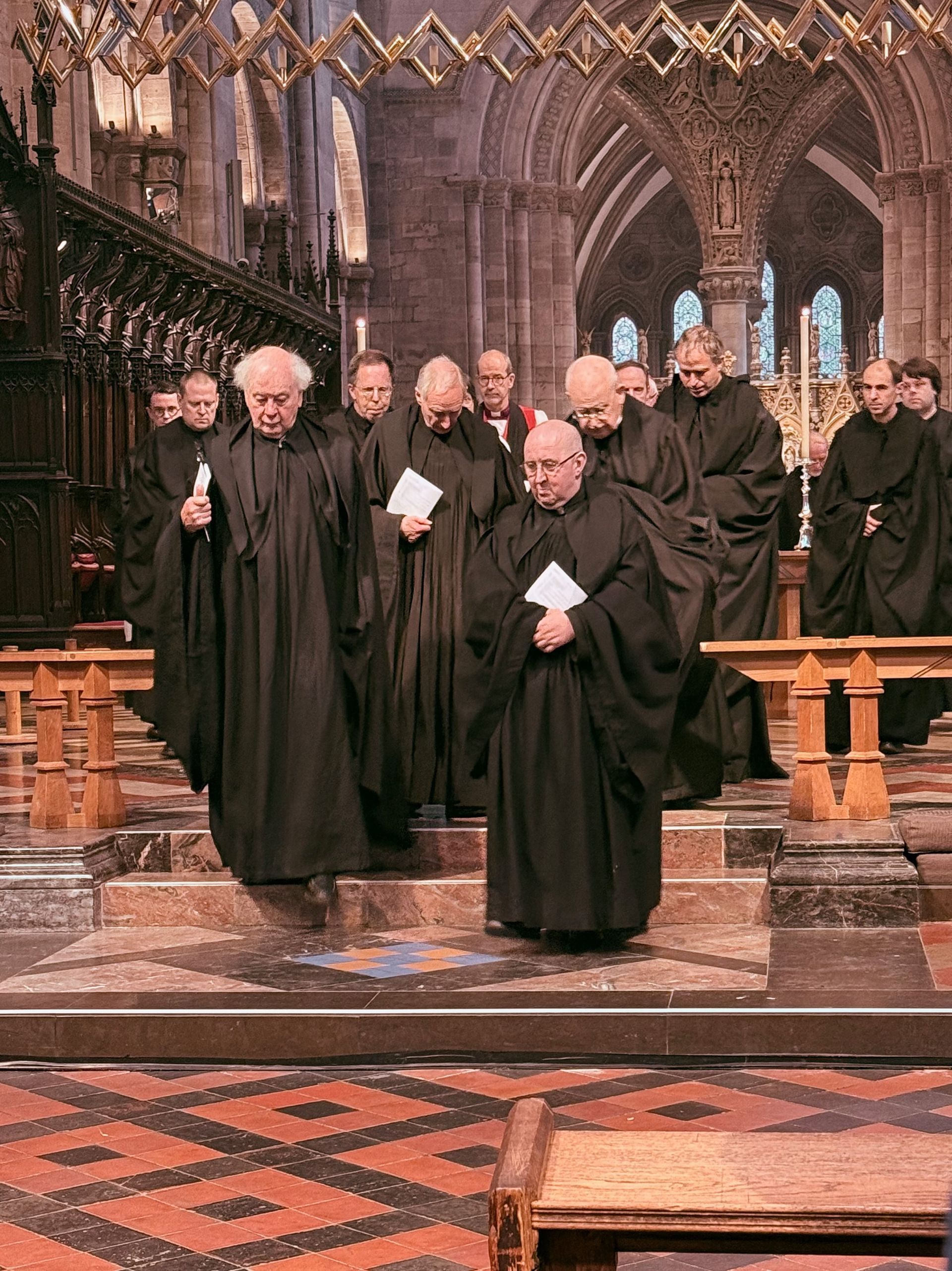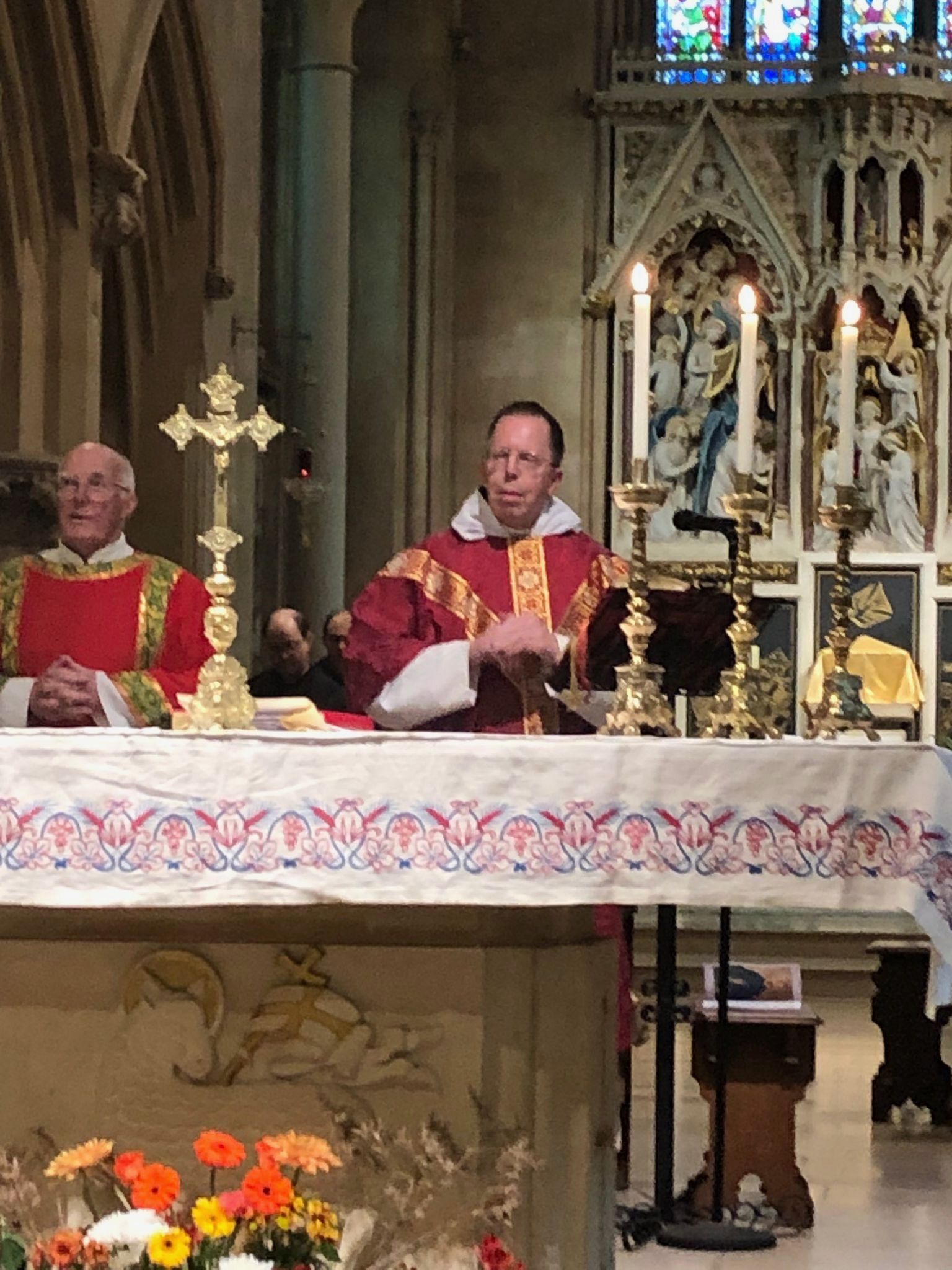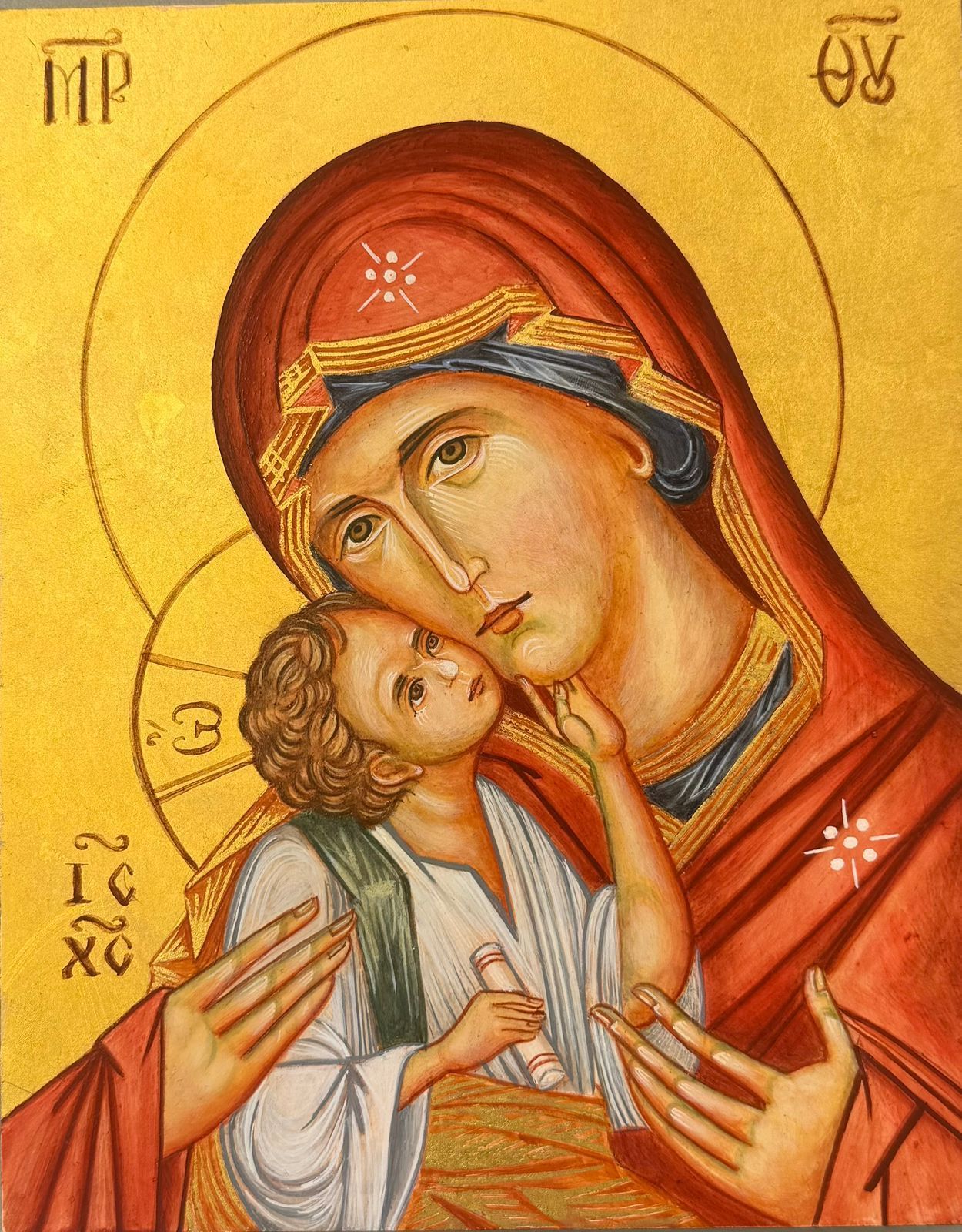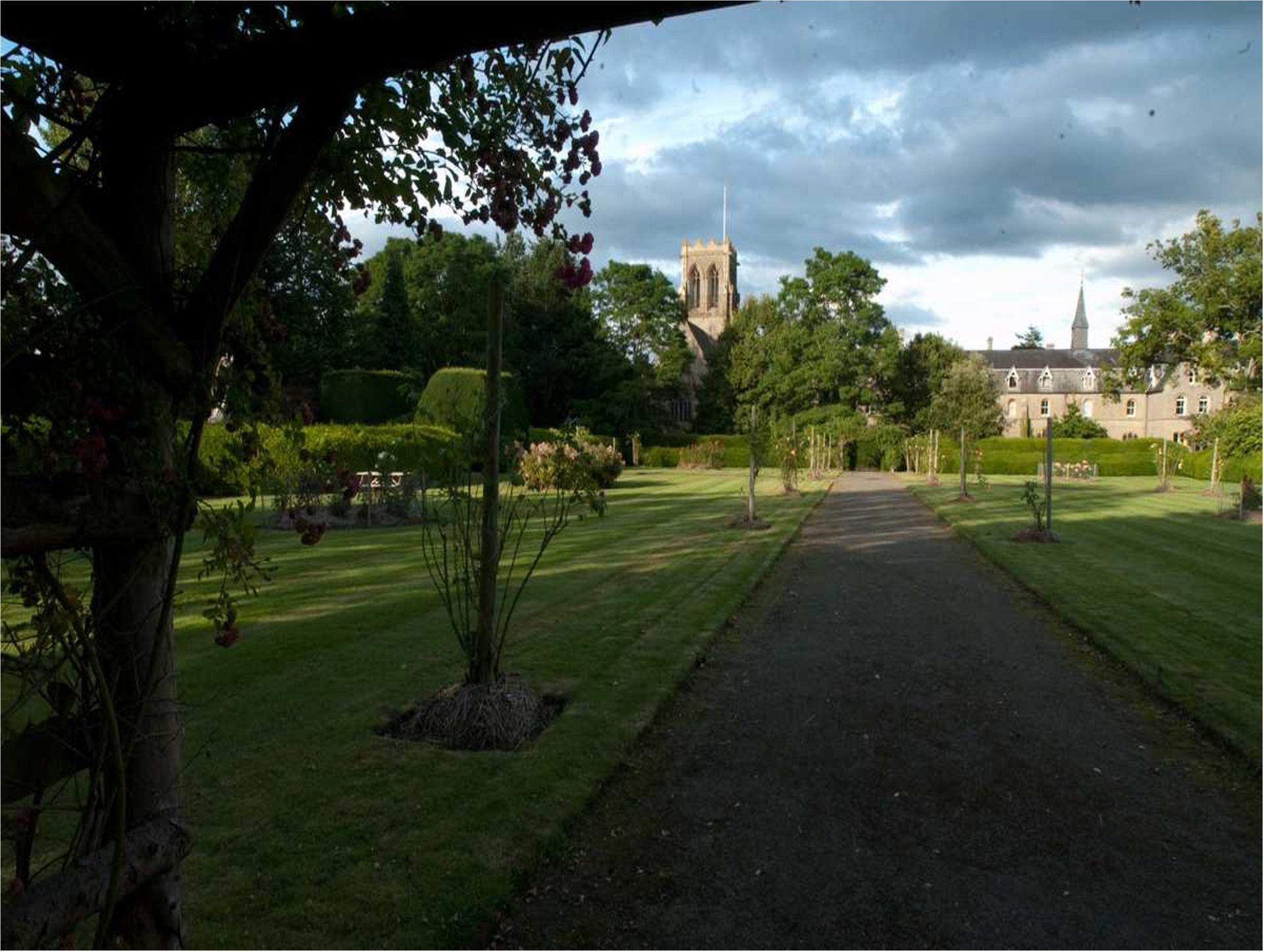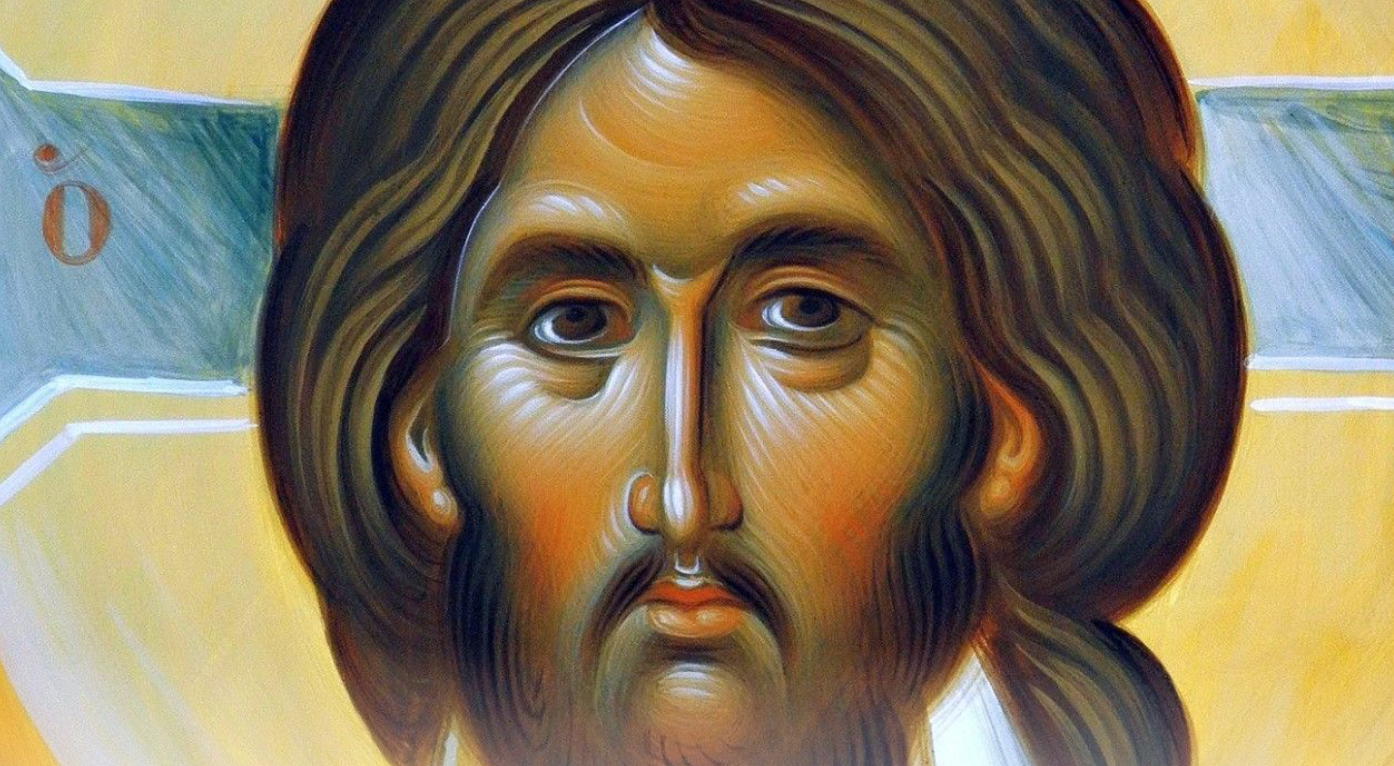1700 Years Since the Council of Nicea
God From God, Light from Light, True God from True God
On Thursday evening, 12th June, Christians from across denominations gathered at Hereford Cathedral for an ecumenical service marking 1700 years since the Council of Nicaea. The service, organised by the Herefordshire Catholic Deanery and Hereford Cathedral, brought together believers to celebrate our shared Christian faith.
Archbishop Mark preached alongside the Bishop of Hereford, Richard Jackson, demonstrating Christian unity in action. The Right Reverend Brendan Thomas OSB, Abbot of Belmont Abbey, proclaimed the Gospel, while beautiful music was provided by Hereford Cathedral Choir. The Archbishop’s homily explored the significance of the Council of Nicaea and what it means for Christians today, drawing on personal experiences of ecumenical relationships and theological reflection.
The service took place at Hereford Cathedral, the seat of the Bishop of Hereford and home of a Christian community that has worshipped and worked together continuously for almost 1,350 years.
The Council of Nicaea in 325 AD was the first ecumenical council of the Church, giving us the heart of the Nicene Creed with its defining words about Christ’s divinity: “God from God, Light from Light, true God from true God.” These phrases continue to unite Christians across denominations in a common profession of faith.
Archbishop Mark reflected on how the Trinity is not merely a “linguistic or mathematical puzzle” but “a mystery of sacrificial love,” and emphasised how our shared baptism connects us all as God’s family. The service concluded with participants reciting the Nicene Creed together, the same profession of faith that has united Christians for seventeen centuries.
The evening demonstrated that despite denominational differences, Christians share a common foundation in Christ that remains as relevant today as it was 1700 years ago.
Archbishop Mark's Homily
I thank you for the honour and privilege of being here in this lovely Cathedral this evening. I am grateful for the hospitality of the Bishop of Hereford, Bishop Richard Jackson, and of the Dean, Rev’d Sarah Brown, and the Chapter. It is good to be with you and good, too, to be joined, by brothers and sisters from across the Christian Churches. Since coming to the Diocese, I have been impressed by the quality and warmth of the relationships between St Francis Xavier Parish and this beautiful Cathedral. I know that the community at Belmont have been key within that, and it is good that Abbot Brendan and the community from Belmont are with us this evening.
Witnessing those different connections, we recognise how important warm relationships are between us. I am reminded of an experience of this from when I was a young priest, and doing dome studies in Oxford. I was tutored by Rowan Williams, the former Archbishop of Canterbury who was Lady Margaret Professor at that time. He showed such great sensitivity and encouragement to me in my faltering attempts to explore the theology of the Swiss Catholic theologian, Hans Urs von Balthasar, some of whose books he had translated. That in itself was an ecumenical enterprise – a young Catholic priest tutored by an Anglican Theology professor on a German speaking Catholic who in the latter part of his life had been made a Cardinal! It could also be a somewhat heady experience. I have to admit, when Rowan’s young daughter, Rhiannon - then aged 4 or 5 - would come in to his study demanding that her daddy read something from the stories of Postman Pat, who was all the rage with toddlers at that time, it was something of a relief. But the time that we spent together instilled in me what I came to recognise as a kind of ‘affective ecumenism’. We have often heard in these years that 'affective ecumenism will lead to effective ecumenism'.
Whilst studying there, I lived in a religious house run by the Jesuits. There were some lovely paintings on the walls. On the main staircase there was an image of St Augustine. He was standing on a shoreline, with a little boy at his feet, who was seemingly playing in the sand. This depicted an episode which is said to have happened to Augustine when he was writing his great Book on the Trinity. Augustine was frustrated as he felt he could not do justice to his experience of God. So, he went for a walk by the sea, and he came across a boy running back and forth to the sea, with a scallop shell in his hand. He took a little bit of seawater in the shell and ran to a hole he made in the sand and poured the seawater into it. Augustine asked him what he was doing, and he said, “I’m trying to put all the water into this hole”. Augustine responded, that this was impossible, and it would take him an eternity to complete the task. But the little boy quipped in reply, “It is easier for me to put all the seas of the world into this hole, than it is for you to explain the Mystery of the Trinity.”
It is a lovely story and captures something of the immensity of what we mark in this anniversary. The God we believe in, is beyond our human constructs or imaginings, or our formulas of expression. Before the great mystery of God, who is Trinity, each of us, is called to worship. There is something greater than ourselves, or anything in creation, here. As the Hymn professes:
“Immortal Invisible, God only wise;
In light inaccessible hid from our eyes,
Most blessed, most glorious, the Ancient of Days,
Almighty, victorious, they great name we praise.”
In the presence of this great mystery of God all we can do, is to bow down and worship.
But there is also something that jars in this story of St Augustine and the little boy by the sea. For it seems to depict our belief in God as a problem to be solved.
The bishops met at Nicaea to challenge this way of approaching God. They met to confront the wrong-headed thinking of a wayward priest, Arius. Why is it that it is we priests who can so often get things wrong, and, indeed, lead others astray in wrong-thinking! With his theory, Arius threatened authentic faith in Christ, declaring that the Logos was not a true God but a created God, a creature "halfway" between God and humanity who hence remained for ever inaccessible to us. The Bishops gathered in Nicaea responded by developing and establishing the "Symbol of faith" the "Creed" which, completed later at the First Council of Constantinople, has endured for 1700 years, across the Christian denominations.
This fundamental text expresses the faith of the undivided Church. We recite it every Sunday, and will recite it together this evening. The Greek term homooúsios is featured: it means that the Son, the Logos, is "of the same substance/ of one being” with the Father. He is God of God, he is his substance. Or as the Creed rather poetically puts it, He is “God from God, Light from Light, true God from true God”.
In the decades following this profession, it was reported that when going into a Barber shop for a haircut or shave, one could be asked by the barber with scissors or blade in his hand, “Do you believe in the homoousion? Do you believe that the Son is one with the Father?” Woe betide you if you gave the wrong answer!
Fourth Century Christians were no doubt more theologically literate than we are. Yet this technical language that the Son was one substance with the Father gave the fullest expression to the Gospel belief that the Incarnation was real - the Logos, the Word of God - as the Prologue of the fourth Gospel says - "became flesh and dwelt among us" (Jn 1: 14).
This affects every believer. It makes salvation possible. If Jesus wasn’t really God, then the incarnation was a sham. Jesus’ death on the Cross was simply the death of a good man. Not the salvific death of the Son of God. Men and women were left in their sins. Jesus’ blood could do no good. At Nicaea, the fundamental gap between God and Humanity was bridged by affirming the full divinity of the Son.
Here, we could be helped by a second picture of the Trinity which I used to encounter on the back stairs of that student house, in which I lived, in Oxford. It was the stairs I normally used, so it would make a deep impression on me as I went up or down it several times a day.
This painting showed Jesus on the Cross, and the Cross, was being held in the lap of the Father, who was leaning over His Son in loving grief, as he watched his Son die for the whole world. You could even see the teardrops in the Father’s eyes. Above both Father and Son, hovered a small dove with wings outstretched, symbol of the Holy Spirit. This manner of depicting God as the Trinity was common in the later Middles ages and was popular for many centuries. It is often called the Throne of Grace.
In such an image, the Trinity we believe in is seen not as a linguistic or mathematical puzzle, but as a mystery of sacrificial love. Nicaea thus affirms what is said in the letter to the Philippians: “Though he was in the form of God (Jesus) did not regard equality with God as something to be exploited, but emptied himself, taking the form of a slave, …. he became obedient to the point of death, even death on a cross.”
This faith of Nicaea is anchored then in the event of our Baptism — for at our baptism we were signed by the sign of the Cross, and immersed in the truth of the Trinity with water. A genuine encounter between God and each person occurs. In the mystery of Baptism, God stoops to meet us. He comes close to us and in turn brings us closer to one another. Baptism means that Jesus Christ adopts us as His brothers and sisters, welcoming us as sons and daughters into God’s family. He can do this because he is fully God. He thus makes us one great family in the universal communion of the Church. Truly, those who believe are never alone. God comes to meet us. Let us go out to meet God and thus meet one another! To the extent we can, let us make sure that none of God’s children ever feels alone!
This is why I give thanks to God that we are able to come together this evening, to affirm the faith of our Baptism, the faith of Nicaea, the Creed that unites us.
Archbishop Mark O’Toole
Archbishop of Cardiff-Menevia
